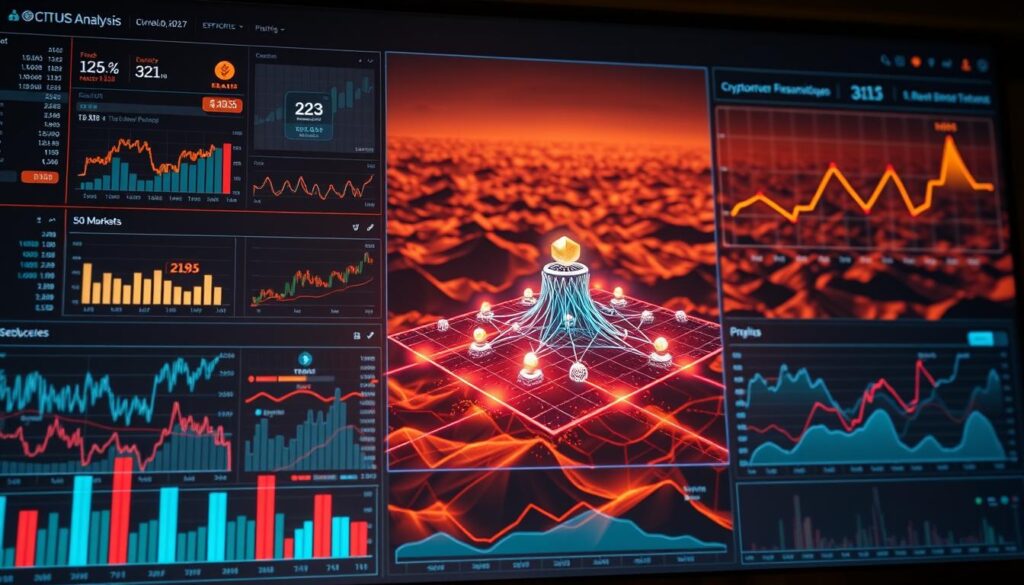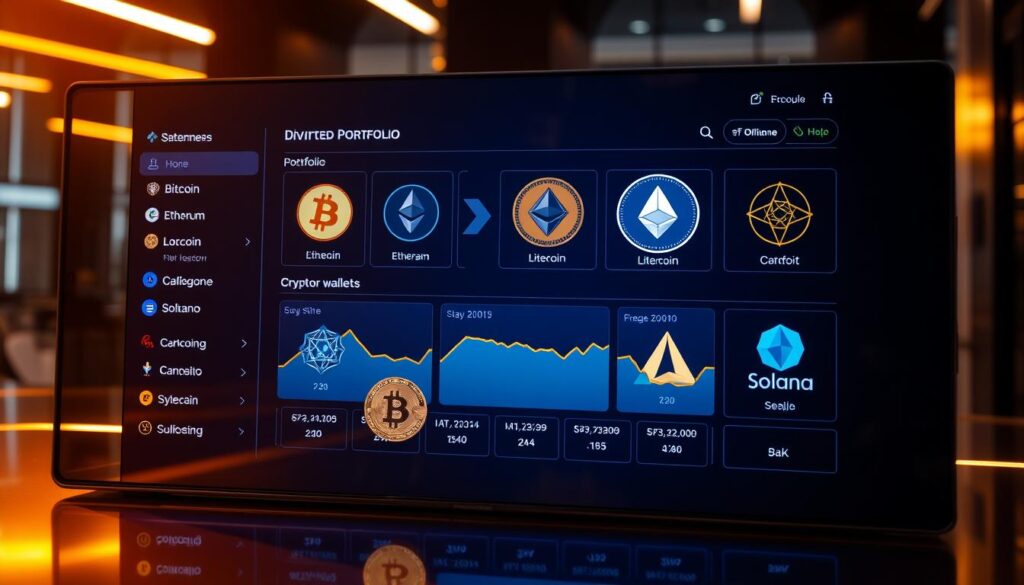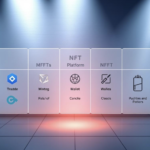Now Reading: Best Cryptocurrency Investment Strategy for Long Term Growth
- 01
Best Cryptocurrency Investment Strategy for Long Term Growth
Best Cryptocurrency Investment Strategy for Long Term Growth

The world of digital currencies moves at lightning speed, with prices often swinging wildly between peaks and valleys. Unlike traditional markets, these assets demand a unique approach that balances opportunity with discipline. Those who thrive here don’t chase quick wins—they focus on resilient frameworks that weather storms and capitalize on innovation.
Market cycles in this space test even seasoned participants. Sharp drops and rapid surges can trigger emotional decisions, but history shows steady, informed approaches often outperform reactive trading. Success starts with understanding the rules of this new game—and playing it with eyes wide open.
Preparation separates successful participants from those who get swept up in the chaos. Learning how blockchain networks evolve, recognizing genuine utility, and identifying sustainable projects create a foundation for smart decisions. This knowledge becomes armor against panic during downturns and clarity during frenzied rallies.
Key Takeaways
- Digital asset markets operate differently than traditional stock exchanges
- Emotional reactions to price swings often lead to poor outcomes
- Education about blockchain technology is crucial for informed decisions
- Mindset shifts help maintain focus during extreme volatility
- Realistic expectations prevent disillusionment during market corrections
Understanding the Cryptocurrency Market Landscape
Behind every crypto surge or crash lies a web of technological and regulatory threads. Digital assets react faster to global events than traditional markets, often swinging 20% in a single day. This volatility stems from thinner liquidity, speculative trading, and round-the-clock operation.
What Fuels the Rollercoaster?
Three primary factors drive dramatic price shifts:
- Tech breakthroughs like Ethereum’s Merge or Bitcoin’s halving
- Government crackdowns or supportive policies
- Macroeconomic conditions (interest rates, inflation)
When Progress Meets Politics
Blockchain upgrades can boost a coin’s value overnight. Yet a single regulatory tweet might erase gains. Recent trends show growing institutional interest, but also heightened scrutiny from agencies like the SEC. Savvy participants track both code repositories and legislative hearings.
Historical patterns reveal cyclical behavior. The 2017 ICO boom and 2022 NFT crash followed similar hype-disillusionment cycles. Recognizing these rhythms helps avoid buying peaks and selling troughs.
Researching and Analyzing Crypto Assets
Successful asset evaluation combines meticulous documentation review with pattern recognition. Investors need clear frameworks to separate quality projects from market noise. Two primary approaches—fundamental and technical assessment—provide complementary perspectives when used together.

Fundamental Analysis: Whitepapers and Market Data
Project whitepapers reveal core objectives and technological innovations. Look for detailed roadmaps, token distribution plans, and real-world use cases. Metrics like network activity and developer contributions often predict long-term viability better than short-term price movements.
Technical Analysis: Chart Patterns and Indicators
Historical trading data shows repeating behaviors. Support/resistance levels and moving averages help identify entry points. Tools like RSI (Relative Strength Index) gauge whether assets are overbought or oversold—critical for timing decisions.
Utilizing Digital Tools for Market Insights
Platforms like Glassnode track on-chain transactions, while sentiment analyzers monitor social media trends. These tools provide real-time data streams that traditional research methods can’t match.
| Method | Focus Area | Key Metrics |
|---|---|---|
| Fundamental | Project fundamentals | Whitepaper quality, team experience |
| Technical | Price patterns | RSI, MACD, volume trends |
| Digital Tools | Market signals | Social sentiment, liquidity depth |
Combining these methods creates a robust evaluation system. Regular updates to your analysis process ensure adaptation to evolving market conditions.
Building a Diversified Crypto Portfolio
Smart wealth builders never rely on a single asset class—this principle proves vital in blockchain markets where unpredictability reigns. Spreading holdings across various coins and protocols acts as shock absorption during turbulence while capturing growth across sectors.

Benefits of Asset Diversification
Grayscale Investments’ $7.3 billion portfolio demonstrates strategic balance. While Bitcoin dominates, allocations to Ethereum and emerging projects create exposure to smart contracts and decentralized finance. This mix reduces reliance on any single network’s performance.
Diversification protects against sudden protocol failures or regulatory shifts. When one asset underperforms, others may offset losses. Historical data shows varied blockchain sectors rarely move in perfect sync—payment networks often thrive when DeFi tokens dip.
Selection Criteria for Altcoins and Stablecoins
Evaluate altcoins using three filters: development activity, adoption metrics, and liquidity depth. Projects with active GitHub repositories and growing user bases often deliver sustained value. Stablecoins like USDC serve dual roles—preserving capital during downturns and enabling quick portfolio adjustments.
| Asset Type | Key Metric | Risk Profile |
|---|---|---|
| Established Coins | Network Security | Moderate |
| Emerging Altcoins | Developer Activity | High |
| Stablecoins | Reserve Audits | Low |
Allocation ratios should reflect personal risk tolerance. Conservative profiles might hold 60% in top assets and 20% in stablecoins. Aggressive approaches could reverse these percentages to chase higher rewards.
Implementing Dollar-Cost Averaging (DCA) and Timely Investments
Navigating turbulent markets requires methods that reduce emotional decision-making. Dollar-cost averaging (DCA) spreads purchases over regular intervals, smoothing out price extremes. This approach turns volatility into an ally rather than a threat.

By committing to fixed amounts at set times, participants avoid chasing peaks or panic-selling dips. Historical data shows this method often outperforms lump-sum buying during uncertain conditions. Let’s explore practical ways to apply this technique.
Setting a Regular Investment Schedule
Consistency trumps timing. Choose intervals matching your income cycle—weekly after payday or monthly bill payments. Smaller, frequent purchases capture more price variations than quarterly bulk buys.
Transaction fees matter. Platforms like Coinbase and Kraken offer fee discounts for recurring plans. Balance frequency with costs—daily buys might erode gains, while monthly intervals risk missing key dips.
| Frequency | Pros | Cons | Best For |
|---|---|---|---|
| Weekly | Captures mid-cycle price swings | Higher transaction costs | Active income earners |
| Monthly | Aligns with budgeting | Misses short-term opportunities | Conservative planners |
| Biweekly | Balances cost and opportunity | Requires manual adjustments | Flexible participants |
Using Automated Tools for Consistent Buying
Apps like Swan Bitcoin execute purchases without emotional interference. Set parameters once—amount, asset, schedule—and let algorithms handle the rest. Automation prevents impulsive changes during news-driven price spikes.
Advanced tools like value averaging adjust amounts based on portfolio performance. If holdings drop 10%, the system increases buy amounts. This dynamic approach enhances cost efficiency while maintaining discipline.
Reinvesting dividends amplifies growth. Platforms such as Celsius Network automatically compound earnings into additional purchases. Over years, these micro-additions create substantial positions through relentless consistency.
Leveraging Staking, Yield Farming, and Innovative Methods
Blockchain technology continues evolving beyond simple transactions, creating fresh avenues for capital growth. Two standout approaches—staking and yield farming—allow participants to generate returns while contributing to network operations. These methods reshape how value flows through decentralized systems.

Understanding Staking Mechanics
Proof-of-Stake networks reward users who lock tokens to validate transactions. Unlike energy-intensive mining, this approach selects validators based on their stake size and duration. Projects like Ethereum now use this model, offering annual yields from 3% to 12% depending on network activity.
Validators face slashing risks if they approve fraudulent transactions. Choosing reputable staking pools with strong security audits minimizes exposure. Rewards often compound automatically, turning idle assets into productive capital.
Exploring Yield Farming Opportunities
DeFi platforms take staking further through liquidity provision. Users deposit token pairs into automated market makers, earning fees from every trade executed through those pools. Platforms like Uniswap or Curve Finance offer detailed guides on yield generation strategies for beginners.
Impermanent loss remains a key risk—the chance that pooled assets might lose value compared to holding them separately. Diversifying across multiple protocols and monitoring reward structures helps balance potential gains with volatility.
Innovative projects now blend staking with governance rights, letting participants influence protocol changes. Some networks distribute airdrops to loyal users, creating unexpected windfalls for engaged community members.
Optimizing Your cryptocurrency investment strategy for long term
Maintaining a competitive edge in dynamic markets demands continuous refinement of your approach. Regular portfolio reviews and adaptive techniques ensure alignment with evolving trends while safeguarding against volatility. This process transforms static plans into living systems that respond to real-time shifts.
Risk Management and Rebalancing Your Holdings
Effective protection starts with position limits—no single asset should dominate your holdings. Establish clear rules: 5% maximum per high-risk token, 20% for established networks. Quarterly rebalancing maintains target allocations, trimming outperforming assets and boosting undervalued ones.
Correlation analysis prevents overexposure to similar protocols. If three holdings react identically to news events, consolidate into the strongest contender. Automated alerts for 15% price swings help execute stop-loss orders before emotions interfere.
Adjusting Tactics Based on Market Shifts
Bull markets favor aggressive accumulation using trailing stops to lock gains. Bear cycles call for strategic accumulation of quality assets at discounted rates. During regulatory uncertainty, shift toward compliant platforms and proof-of-stake networks.
Track developer activity and protocol upgrades—surges in GitHub commits often precede innovation-driven rallies. Pair technical indicators with macroeconomic trends like interest rate decisions. Our comprehensive framework details methods for aligning decisions with broader financial currents.
Performance tracking tools quantify what works. Compare returns against sector benchmarks quarterly, retiring underperforming tactics while scaling successful methods. This disciplined evolution separates transient luck from repeatable success.













